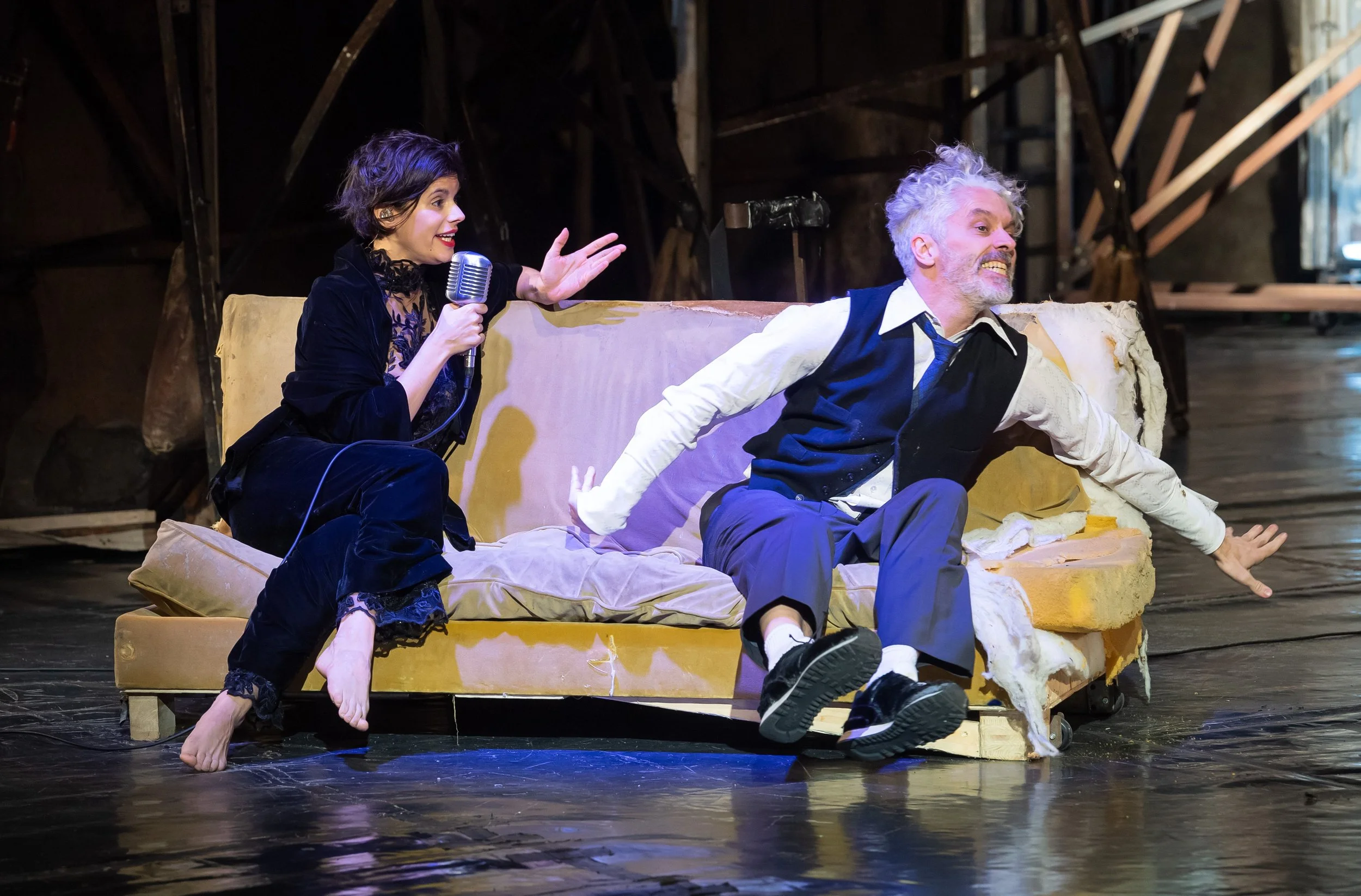Review: ROOM is a beautiful snapshot of modern circustry with very few answers
Created, directed and performed by James Thierrée, original music by James Thierrée, featuring Compagnie du Hanneton
Review by Rebecca Cushway
ROOM defies categorisation, melding music and dance, mime and circustry across a stage that is artfully arranged to look like a crumbling studio. James Thierrée is the crumbling artiste in turn, playing both ringleader and scolding parent to his Compagnie du Hanneton as he attempts to bring together a composition, a dance, and of course, a room. How very French, to develop a performance that’s one unifying message is that of desperately failing communication.
The blurred line between Thierrée the director, the actor, and the writer, and Thierrée the fictional driving force in ROOM, is the first of many subtle and clever choices that are designed to unbalance his audience. The metatheatre of the show involves arguing with the lighting crew, an indignant stagehand interrupting scenes with miscellaneous props, a fourth-wall-breaking monologue and a foray into the stalls as the cast attempts to leave the theatre.
Thierrée’s Compagnie du Hanneton play fictionalised versions of themselves on stage, speaking nonsense in many languages and playing multiple instruments whilst collapsing and expanding across the stage in some semblance of a storyline. I was, at first, too impressed by the sheer technical brilliance of the cast, played off as accident and improvisation, to focus too hard on the constantly shifting plot. Thierrée begins as a madly dishevelled architect or designer of some sort, fighting with the figurative concept of ROOM’s construction, while the very literal stage props of the walls dance and move in protest. The accompanying cast at this point is a dysfunctional orchestra, playing a blend of rock opera and free jazz while they argue with their now-director.
Thierrée then transforms into a composer, auditioning the charming Mademoiselle Anne-Lise Binard in a nonsensical and chaotic back and forth where her viola speaks over her and then takes on a mimed ten-tonne weight when picked up by the flustered Thierrée. The scene and staging shift again; before you realise anything has changed, a golden armadillo is mid-joust with an acrobat that climbs the walls. The gorgeous Sarah Manesse slinks through the scenes in oily black robes as the voice of reason and the through-line of operatic vocals.
The costume, lighting and set design are reminiscent of 1980s to early 2000s dark fantasy. This is largely in part due to the unsettling anthropomorphism and unpredictable internal logic of these characters as they try and fail to communicate something, anything, with one another. Despite the chaos of the show, each character is carefully fleshed out. They have such clearly defined personalities that we are surprised when they act outside of them. Thierrée’s cast appears as voices inside a madman’s head as he longs to create something larger than himself.
Mid-performance, Thierrée stops to speak to us, the audience, about the purpose of the show. He says that we would want to be able to tell people we went to see this thing, and say that it was about something. He points out that the show will have few quiet moments, and that this is one of them. The audience feels for a second that they are getting close to an answer, that this ever-building show is finally going to reach its climax and ultimate conclusion.
With a crash and a bang, however, the show goes on and unfolds into a new (but familiar) conflict between performer and performance. Here is where my attention faltered. The ever-present question of whether or not there would be a resolution to this show was finally answered, and I was disappointed. The trouble with keeping an audience questioning your every move is that as soon as you confirm their suspicions that there will be no satisfying ending you break the central tension you have created.
The aerial theatrics that followed this was the highlight of the latter portion of the show: Ching-Ying Chien and Nora Horvath tussle suspended from aerial loops and Thierrée runs mid-air from his unruly ensemble before ROOM’s roof is finally under his control, spun light as a feather atop his finger. There is a collective sigh as the room is physically pieced together around the cast, and the compy freeze in place as James Thierrée finally walks out the door and the show is ended.
A beautifully entertaining snapshot of modern circustry from an artist well-versed in the beautiful and absurd, ROOM is a series of questions that culminate in very few answers. By addressing nothing, and purposefully bewildering its audience, it asks a question of its audience in turn: is expecting any more than breathtaking entertainment a disservice to theatre as a medium?
ROOM plays at the Roslyn Packer Theatre unil 25 January, as part of Sydney Festival 2023.
Find tickets and information here.
Collage by Ceridwen Bush, production images by Wendell Teodoro
Rebecca Cushway is a radio host blessed with the most luxurious radio voice in the Inner West and burdened with the ability to do everything everywhere all at once. She’s not nearly as smart as the undergrads she tutors at UTS think she is.
This review has been generously donated by Bec.
Like this review? Buy us a $5 coffee here. You can do it once, once a month, or as many times as you like.



